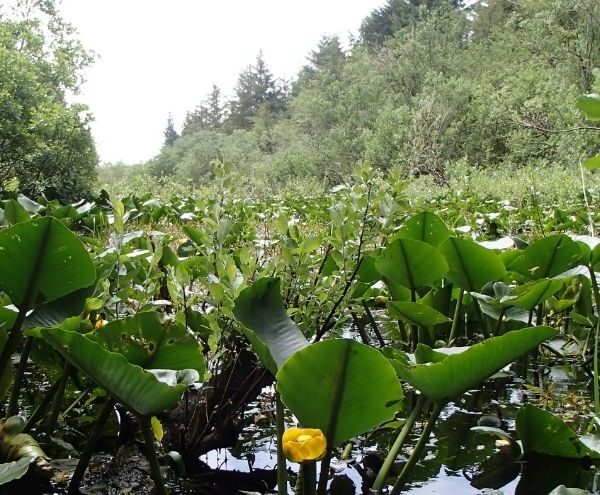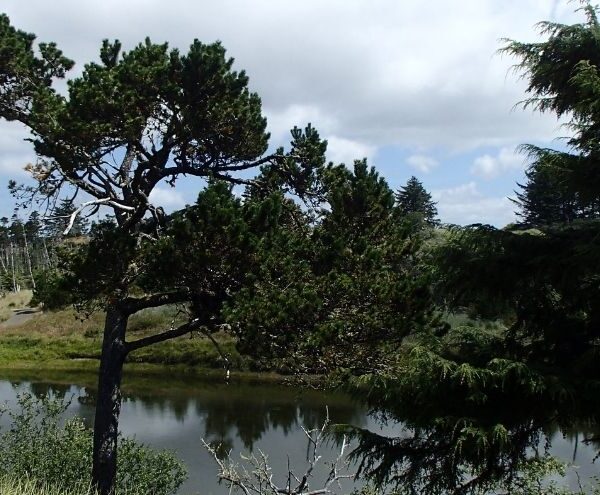
Type of Project: Habitat Reserve
Gearhart Fen is the largest contiguous wetland of its kind remaining on the Oregon Coast. Less acidic than bogs, fens have higher nutrient levels and can support a more diverse animal and plant community, including a rare butterfly species and carnivorous sundew plants. Our conserved lands here include a large easement.
Gearhart Fen Habitat Reserve lies within the Gearhart Fen, the largest contiguous wetland of its kind remaining on the Oregon Coast. (Listen to the symphony of chorus frogs in the Fen.) It occurs in a dune swale south of Cullaby Lake in the southeastern corner of the Clatsop Plains east of US 101. Less acidic than bogs, fens have higher nutrient levels and can support a more diverse animal and plant community; more than 200 plant species have been identified in the Gearhart Fen.
Once I started hiking around out there and looking at it, I thought ‘ this is off the charts!
Neal Maine, NCLC founding executive director
Fens are typically fed by mineral-rich surface water perched above the local groundwater table. With its thick mat of sphagnum moss, its stunted pines, and its carnivorous sundew plants, the Gearhart Fen is a classic example. Native frogs, songbirds, swallows, ospreys and bald eagles, elk, and other wildlife live here or migrate through.
One corner of this property has special meaning to NCLC. Neal’s Fen was donated by NCLC’s first executive director, Neal Maine. He and his wife bought the property in 1999 specifically to conserve it. Neal spent 25 years acquiring special lands for conservation by NCLC, and it was he who facilitated The Nature Conservancy’s protection of 513 acres in the Fen, land now conserved by NCLC.
Our conserved land at Gearhart Fen is composed of four contiguous properties. The largest is Gearhart Fen Easement (469 acres), transferred to NCLC by TNC in 2014. The others are Gearhart Fen (conserved 2014: 34.45 acres), Neal’s Fen (2012: 7.12 acres), and Little Gearhart Fen (2005: 11.32 acres).


